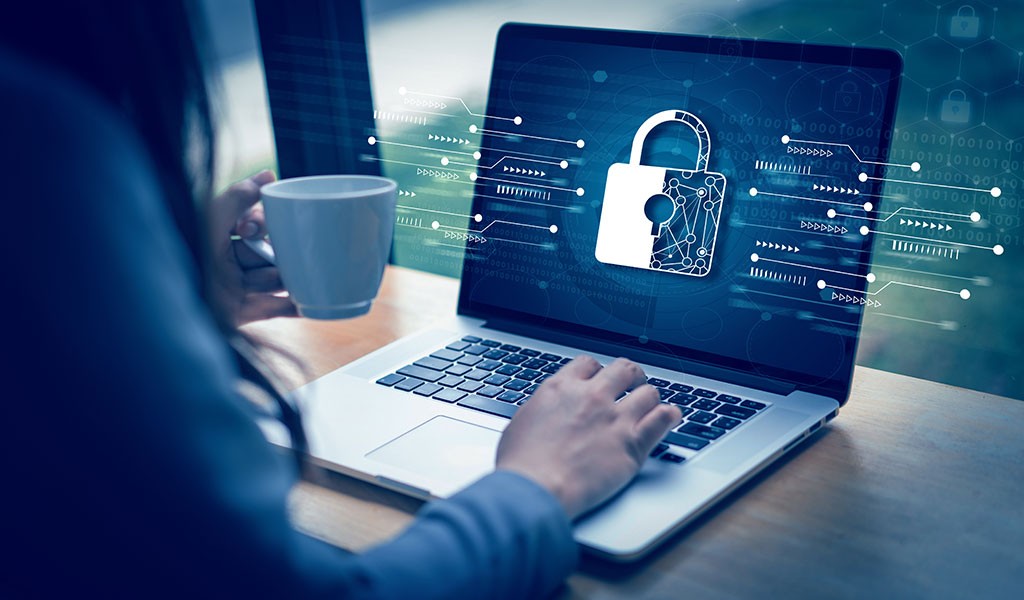How to Secure Your Online Account
A Step-by-Step Guide
Protecting your online accounts has become more critical than ever in today’s digital age. With the increasing prevalence of cyber threats, it is essential to take proactive measures to secure your online presence. This comprehensive guide aims to provide you with step-by-step instructions and valuable insights on how to enhance the security of your online accounts. From strengthening your passwords and implementing two-factor authentication to safeguarding personal information and staying vigilant against phishing attacks, these strategies will help you establish robust protection for your online accounts. By following these best practices, you can minimize the risk of unauthorized access, data breaches, and identity theft, ensuring the safety of your valuable online assets.
1. Introduction: Importance of Online Account Security
In today’s digital age, where everything from our finances to our social lives is intertwined with the internet, it’s crucial to prioritize the security of our online accounts. While the convenience of online platforms has made our lives easier, it has also opened up opportunities for cybercriminals to exploit vulnerabilities and gain unauthorized access to our personal information. That’s why learning how to secure your online accounts is essential to protect yourself from potential risks and safeguard your digital identity. In this step-by-step guide, we’ll walk you through some practical tips and strategies to fortify your online account security, making it harder for cyber attackers to breach your defenses.

2. Assessing and Strengthening Password Security
2.1 Evaluating the Strength of Your Current Passwords
Let’s face it, we’ve all been guilty of using weak and easily guessable passwords at some point. Your pet’s name followed by your birth year might seem clever to you, but it’s a cakewalk for hackers. The first step in securing your online accounts is to assess the strength of your current passwords. Take a moment to review your passwords and retire any that are simple or repetitive.

2.2 Creating Strong and Unique Passwords
Now that you’ve bid adieu to your feeble passwords, it’s time to create robust ones. Avoid using common phrases or personal information that can easily be connected to you. Instead, consider using a passphrase that is easy for you to remember but would be challenging for anyone else to guess. And remember, one password does not fit all! It’s essential to use unique passwords for different accounts to prevent a single breach from compromising multiple platforms.
2.3 Utilizing Password Managers
If you’re struggling to keep track of numerous strong and unique passwords, fret not! Password managers are here to save the day. These nifty tools securely store your passwords and automatically fill them in when you need to log in to a website or app. They also generate strong passwords for you, eliminating the need to come up with your own. With a password manager, you only need to remember one master password to unlock all your others. It’s like having a personal bouncer for your online accounts.
If you want to build your website in an affordable price contact: www.nextr.in

3. Implementing Two-Factor Authentication
3.1 Understanding Two-Factor Authentication
It requires you to provide two forms of identification: typically, your password and a temporary verification code sent to your phone or generated by an app. This means that even if someone manages to crack your password, they still need your physical device to gain access.
3.2 Setting Up Two-Factor Authentication on Different Platforms
Enabling 2FA on your online accounts is a wise move. Most platforms, such as email providers, social media sites, and banking services, offer this feature. To set it up, go to your account settings and find the 2FA or “security” section. From there, you can choose to receive verification codes via SMS, use an authenticator app, or even purchase a physical security key for added protection. Just follow the platform’s step-by-step instructions, and you’ll have an extra lock on your accounts that even the most determined cybercriminal would struggle to pick.

4. Protecting Against Phishing Attacks
4.1 Recognizing and Avoiding Suspicious Emails
Phishing attacks often start with an innocent-looking email asking for your personal information or urging you to click on a malicious link. But fear not, you’re smarter than that! Train yourself to spot tell-tale signs, such as poor grammar, generic greetings, or requests for sensitive data. Always be skeptical and avoid clicking on suspicious links or downloading attachments from unknown senders. When in doubt, reach out to the supposed sender through a separate and verified communication channel to confirm the legitimacy of the email.
4.2 Verifying the Authenticity of Websites and Links
Don’t let cybercriminals lure you into their trap by designing fake websites that mimic trusted ones. Always double-check the URL and ensure that the website is using a secure connection (look for the padlock symbol in your browser). If you receive a link, hover over it to see the actual destination before clicking. When it comes to your online security, a second of caution can save you hours of headaches.
4.3 Reporting Phishing Attempts
If you encounter a phishing attempt, be a good internet citizen and report it. Most email providers and web browsers have reporting options to help curb the spread of phishing campaigns and protect others. By doing so, you’re not only safeguarding yourself but also contributing to the collective fight against cybercrime.
Remember, securing your online accounts is an ongoing process. Stay vigilant, keep up with security updates, and be proactive in implementing these measures. With a little bit of effort and a touch of tech-savviness, you can keep those cyber baddies at bay and enjoy the digital world worry-free. Happy browsing!
If you want to build your website in an affordable price contact: www.nextr.in

5. Safeguarding Personal Information and Identity
In this digital age, protecting our personal information and identity online is of paramount importance. Hackers and cybercriminals are lurking around every digital corner, ready to exploit any vulnerabilities they can find.
5.1 Being Mindful of Sharing Personal Information Online
Think twice before sharing personal information online. That picture of your shiny new credit card might look great on Instagram, but it also gives potential scammers all they need to wreak havoc on your financial life. Remember, not everyone on the internet has your best interests at heart.
5.2 Protecting Social Media Profiles
Your social media profiles can be a treasure trove of personal information for cybercriminals. Make sure your profiles are set to ‘private’ to limit who can see your posts and personal details. Also, be cautious about accepting friend requests from strangers or sharing sensitive information through direct messages. You never know who might be on the other end of the screen.
5.3 Managing Privacy Settings
Take a few minutes to review the privacy settings on your online accounts. Many platforms offer granular controls over what information is shared and with whom. Adjust these settings according to your comfort level to limit the exposure of your personal information. It’s like installing a security system in your online world.

6. Regularly Updating Software and Devices
We get it, software updates can be annoying. But they’re crucial for maintaining the security of your online accounts. Here’s why you should embrace the update button:
6.1 Importance of Software Updates
Software updates often contain patches for security vulnerabilities that have been discovered. By not updating your software, you’re essentially leaving the front door wide open for cybercriminals. So, next time you see that little notification, don’t delay. Update, update, update!
6.2 Keeping Devices and Operating Systems up to Date
It’s not just the software that needs updating – your devices and operating systems also need some love. Regularly updating your gadgets ensures you have the latest security features and bug fixes. So, dust off that neglected software update button on your phone, tablet, and computer and give it some attention. Your online accounts will thank you.
If you want to build your website in an affordable price contact: www.nextr.in

7. Monitoring and Responding to Suspicious Activity
Ever felt like someone was watching your online accounts? That uncomfortable feeling might be a sign of suspicious activity.
7.1 Monitoring Account Activity and Notifications
Keep a close eye on your account activity and set up notifications whenever possible. This way, you’ll be instantly alerted about any unusual logins or suspicious transactions. It’s like having a personal online security guard, minus the uniform.
7.2 Recognizing and Responding to Signs of Account Breach
If you notice any signs of an account breach, like unfamiliar emails or unauthorized access, take immediate action. Change your passwords, notify the service provider, and enable any additional security measures available. Don’t panic, but don’t ignore the warning signs either. Being proactive is key to safeguarding your online accounts.

8. Maintaining Ongoing Online Account Security
Securing your online accounts is an ongoing process. It requires a combination of mindfulness, regular updates, and vigilant monitoring. By following the tips in this guide and staying informed about the latest security practices, you’ll be well on your way to protecting your digital presence. So, take charge of your online security and show those cybercriminals who’s boss!

Conclusion
Securing your online accounts is an ongoing process that requires diligence and awareness. By implementing the strategies outlined in this guide, you can significantly enhance the security of your online presence. Remember to regularly update your passwords, enable two-factor authentication, and remain vigilant against phishing attempts. Additionally, protect your personal information and stay proactive in monitoring suspicious activity. By prioritizing online account security, you can enjoy a safer and more secure digital experience, giving you peace of mind knowing that your valuable information is well-protected.

FAQ
1. Why is online account security important?
Maintaining online account security is crucial to protect your personal information, financial data, and digital identity from unauthorized access, identity theft, and other cyber threats. It helps prevent potential data breaches, monetary loss, and the misuse of your online accounts.
2. How often should I update my passwords?
Regular password changes help mitigate the risk of unauthorized access, especially if a service or platform you use has experienced a data breach. Additionally, changing passwords periodically reduces the likelihood of attackers cracking your passwords through brute force or dictionary attacks.
3. What should I do if I suspect my account has been compromised?
If you suspect that your online account has been compromised, take immediate action. Change your password, enable any available two-factor authentication methods, and review your account activity for any unauthorized access. Contact the respective service provider or platform to report the incident and seek guidance on further steps to secure your account.
4. Is two-factor authentication necessary for all my online accounts?
While two-factor authentication (2FA) is not mandatory for all online accounts, it is highly recommended to enable it whenever possible. 2FA provides an additional layer of security by requiring a second form of verification (e.g., a text message, authenticator app) along with your password to access your account.

If you want to build your website in an affordable price contact: www.nextr.in
Read Next Blog: A Beginners Guide To Understanding Artificial Intelligence


















